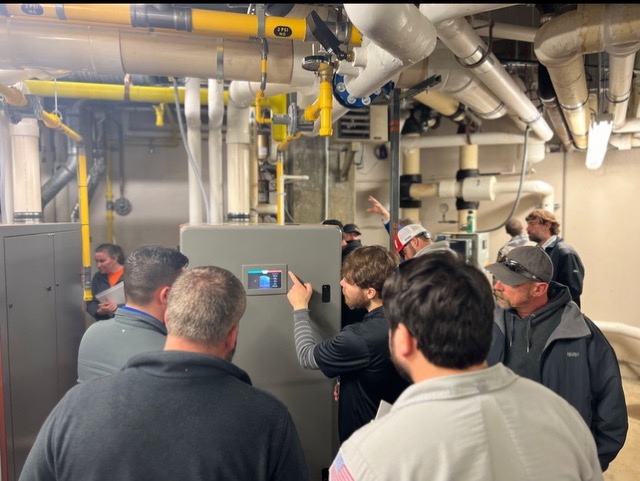How to Right-Size Hot Water Systems Using Real-Life Usage Data
![]() Continuing Education
Continuing Education
Use the following learning objectives to focus your study while reading this month’s Continuing Education article.
Learning Objectives - After reading this article, you will be able to:
- Review the legacy water heater sizing methodologies.
- List the drawbacks of current sizing methods (results in large upfront costs, need for space-consuming redundancy, etc.).
- Describe how using data to drive engineering decisions results in more accurate sizings.
- Summarize how a data-driven sizing approach has been error-free for nine years.
Theoretical models for sizing hot water systems have been employed since the Hunter’s Curve was initially developed in the 1940s. While refinements have been made to sizing models, most of the basic assumptions remain unchanged, resulting in most systems being needlessly oversized, costing facilities dearly in capital expenses, maintenance costs and utility usage.
But there is a better way – using a database of water usage from thousands of similar use facilities, including fixture counts, geographic locations and outlet temperature preferences. Using real-life data eliminates the need for guesses and randomly assigned buffers for “what if” scenarios. The most advanced water heater manufacturers now even provide this data to plumbing engineers and contractors with guaranteed equipment sizing for their expressed needs.

Photo courtesy of Intellihot

|
Robbie Svidron serves as Intellihot’s corporate trainer, bringing his field knowledge and expertise of water heating options to contractors and engineers across the country, ensuring that they benefit from the latest advancements in the field. Drawing from a prior position as a Mechanical Systems and Applications Engineer, Robbie has a comprehensive understanding of various water heating options, ranging from boilers with large storage tanks, to gas-powered tank-type heaters, to modern tankless and heat pump water heaters. Constantly exploring ways to reduce water heating costs while enhancing user convenience with emerging technologies, Robbie has guided numerous professionals in transitioning commercial properties from outdated tank-type heaters to more efficient tankless systems. With a curious mindset, Robbie quickly discerns the unique training needs of his audience, providing them with innovative and practical tips for implementing efficient and safe water heating systems that are sized correctly for their hot water needs. |
